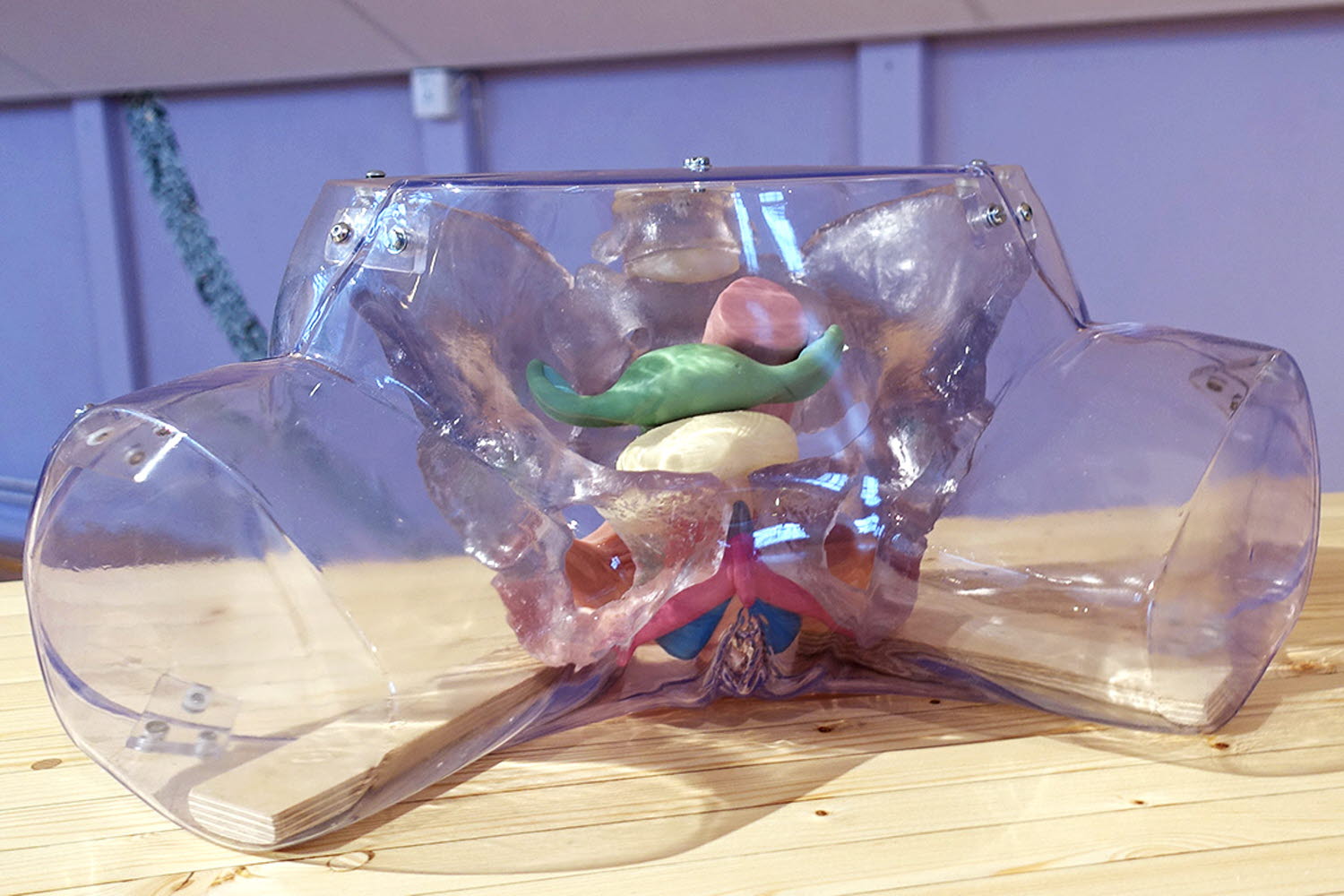
Genitals XX
What happens inside the vagina when a woman is sexually aroused, and how does the menstrual cycle work?
The female outer genitals consist of the mons pubis, clitoris, inner and outer labia, perineum and vaginal opening. The inner genitals consist of the vagina, womb, fallopian tubes and ovaries.
The model’s parts have different colours to make it easier to tell them apart:
- Green: Ovaries, fallopian tubes, womb (or uterus) and vagina.
- Yellow, orange, pink and blue: The bladder, urethra, female prostate, clitoris – capillary tissue that swells when aroused.
- Pink: Intestine and pelvic floor.
Certain parts of male and female genitalia have the same function – to increase arousal. For example, the female clitoris can be compared to the glans of a penis as both swell and become extra sensitive to touch.
A woman’s vagina expands both upwards and outwards when it is sexually stimulated. The cervix starts at the top of the vagina. It is the entrance to the uterus. Each month, the uterus prepares for a fertilised embryo. If there is no embryo, the lining of the uterus leaves the body and a woman will bleed – have a period or menstruation.
The ovaries contain follicles that all contain the beginnings of an egg. When a woman is born, her ovaries contain around one million immature eggs. After puberty, 500 of these eggs will mature so they can be fertilised. At the same time, the production of female sex hormones increases and the female genitals develop.
Here, you can learn about the male genitals.









